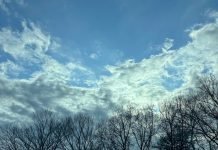St. Paul’s Noah Vang was born in Laos and spent his early childhood in a refugee camp in Thailand. He came to the United States in 1989 and eventually graduated from the University of Wisconsin–Milwaukee. Vang provided research to help create a new exhibit at the Minnesota History Center commemorating the arrival of the first Hmong people in the state 40 years ago. We Are Hmong Minnesota, which opens March 7 and runs through November, includes everyday items from Laos, spiritual and religious objects, news clips, and personal possessions, as well as oral histories chronicling what is today the largest Asian population in the state, at 66,000 strong.
“My family came here with literally nothing. I just had the clothes that I was wearing, and we had to start everything over. It was tough. In the refugee camp I knew you got to America by flying away into the sky. No one had ever gone there on a boat, or walked there. The ones who left had never returned—so I wondered, What if you never returned?”
“Around 2004, I became very curious about who I am. There’s a certain point in your life when you have this imagination about yourself, your family, your community. I came here when I was 8, but a lot of our history and culture aren’t taught at school. The only options were grass-roots research and oral histories.”
“I felt separated from my history. There weren’t any resources—the only history available was American history, and when it comes to the Vietnam War, there’s nothing about Laos because it was a secret war. This is my way to connect to a past that I was never part of, to search for that identification with what I am.”
“40 years is a short time, but it’s a long time for us as a community. The new Hmong generation in their 20s make up the largest part of our population, and many of them don’t have a connection to the history of my parents’ generation. And if you don’t document it, we’ll lose it for sure.”
“My son is 6. He asked me, What is Hmong? I told him that we’re very unique among all people, with a special story, and that he should keep that story with him. We call kids his age the 2.0 Hmong. I’m the 1.5, and my parents are the 1.0.”
“The majority of our people came here with no [marketable] skills at all, but Minnesota believed in us—and we took that opportunity. There was a language barrier, social differences, just a completely different environment. Almost every American has an immigration story, and that’s something we try to tie our own story into.”
“I’m very nervous about the exhibit. There’s a lot to cover, and a lot to present. But these are the kinds of stories we need to know. And we’re here to stay—I don’t think we’re going anywhere anymore! This 40 years has been like 100 years for us. So many of us have taken advantage of what we want to achieve, to live that American dream, and our community has made a lot of progress. This exhibit is a way for all of us to better understand our neighbors, and to understand ourselves.”







